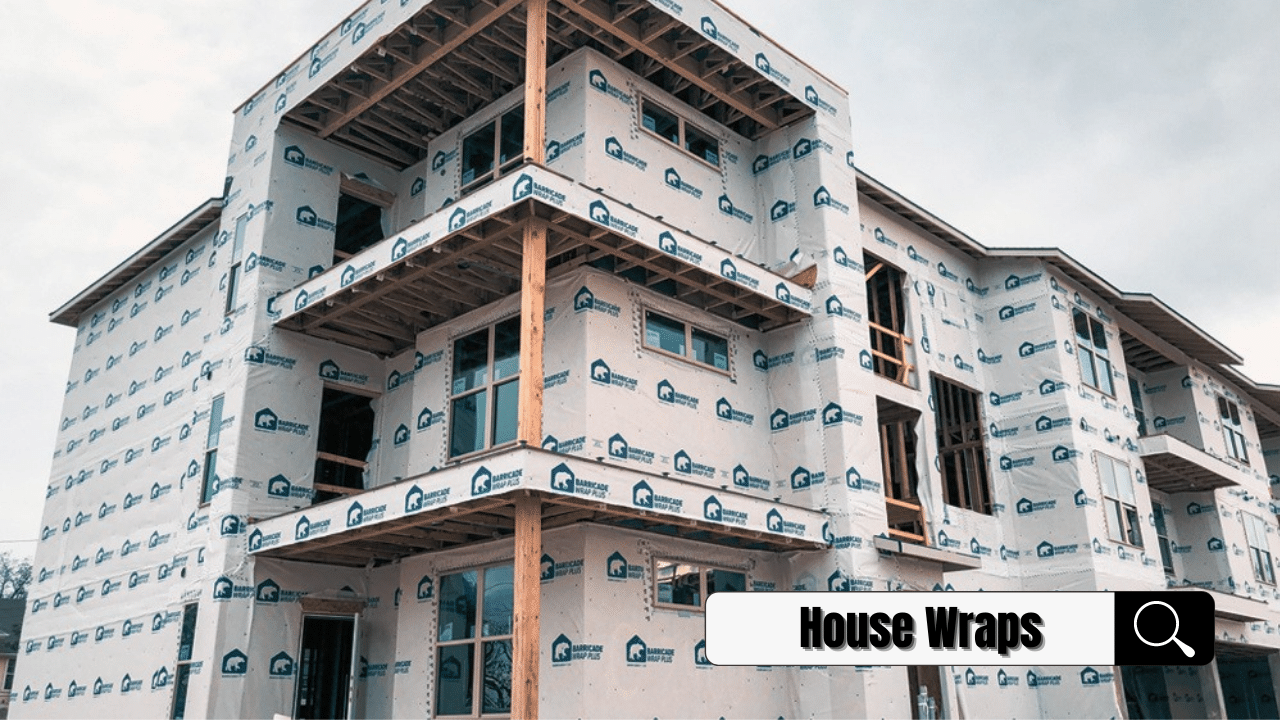If you’re in the process of constructing your home, you might have some unanswered questions about the ins and outs of house wrap.
After all, it’s considered by lots of homeowners and property developers to be a crucial part of the building process, thanks to the many benefits associated with wrapping a building.
To help you decide whether or not you should proceed with a house wrap, we answer some of the most commonly asked questions about this important part of the building process, so you can make the necessary arrangements.
1. What is House Wrap?

House wrap provides much-needed protection for your home against the environment. In most instances, house wrap is comprised of a lightweight, synthetic material that covers the sheathing and is installed behind the siding, whether it’s vinyl, brick, composite, or any other material.
While cladding or siding is your home’s first line of defense against the elements, house wrap is the secondary level of protection against the likes of air and water penetration that could affect the interior of your property.
2. Why is House Wrap Important?
The primary role of house wrap is to stop air and water movement through the wall cavities. But installing house wrap also ensures your property complies with the minimum requirements laid out by the International Building Codes (IBC) regarding exterior walls.
IBC legislation 1403.2 stipulates that the exterior walls of a building must have a weather-resistant ‘exterior wall envelope,’ that prevents water from accumulating within the wall assembly. House wrap is the perfect way to prevent water from seeping through the cavities and damaging your interior.
When house wrap is correctly installed by professionals, it ensures your home is protected from water intrusion and prevents structural damage that may occur as a result.
3. How Should House Wrap be Installed?
Unless you’re skilled and experienced in the building industry, it’s best to hire the services of professionals to correctly install house wrap. While every firm installs house wrap slightly differently, each is likely to follow a process that involves the following steps:
It’s so important to install house wrap correctly, as it increases the energy efficiency of your home and prevents wood rot and mold from becoming a problem.
4. What are the Benefits of House Wrap?
Aside from preventing water infiltration, providing it has been installed by a professional, house wrap can have many benefits, including:
5. Is it Possible to Use House Wrap Alongside All Types of Siding?
Most types of siding that are installed at a property are susceptible to water infiltration or leakages. This is why house wraps are such a useful addition, as they provide an extra layer of protection against the elements and prevent leakages from causing damage to your home.
Wood siding in particular benefits from house wrap, as it has multiple seams that overlap, which means there are more potential entry points for water. Equally, siding made of aluminum and vinyl benefits from wrapping, as the likelihood of water entering through the joints is high. (Related: Vinyl Siding Cost And Consumer Guide)
But homes with brick, stucco, or other masonry-based sidings can also benefit from wrapping; it’s just important that they’re wrapped by a professional.
6. How Much does House Wrap Cost?
It typically costs anywhere between $597 and $719 to wrap the average American house. This is based on an average cost of $1.19 to $1.44 per square ft. Included in this cost are the following:
The biggest influence in terms of the cost of house wrap is the size of your home, so you should use the above prices as a guide only. Be sure to reach out to several firms in your local area so you can choose the most competitively priced house wrap.
7. How long can a House Wrap be Exposed to UV Rays?
When you’re building a house, there’s likely to be a period of time that your property is exposed to the elements. The good news is the high-quality wraps can withstand UV rays for up to nine months without degrading in quality.
If you leave house wrap for any longer than this, it will start to deteriorate and become less effective. If you think your property will be exposed for longer than this, you can ask your installer if you can invest in additional protection for your house wrap to ensure it’s up to standard when your house is finished.
The Verdict
House wrap isn’t necessarily an integral addition to your home, but it’s undoubtedly beneficial. Homes that have been wrapped are less likely to suffer from water infiltration, which makes mold and rot less likely to affect the structural integrity of your home.
And while wrapping your house presents an additional expense to the construction of your home, it’s undoubtedly worth it. After all, homes that are wrapped are compliant with the International Building Codes and are much more durable and weather-resistant as a result.
